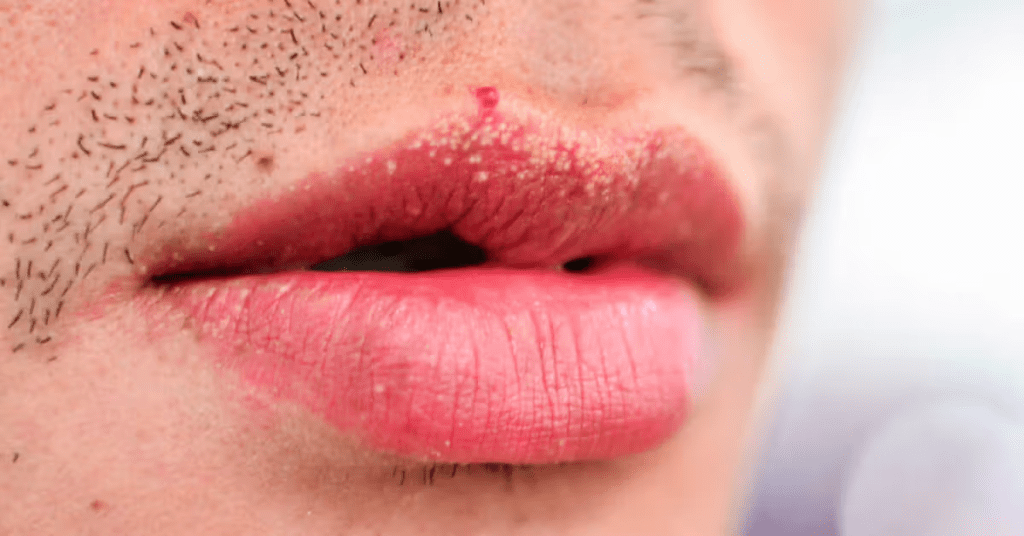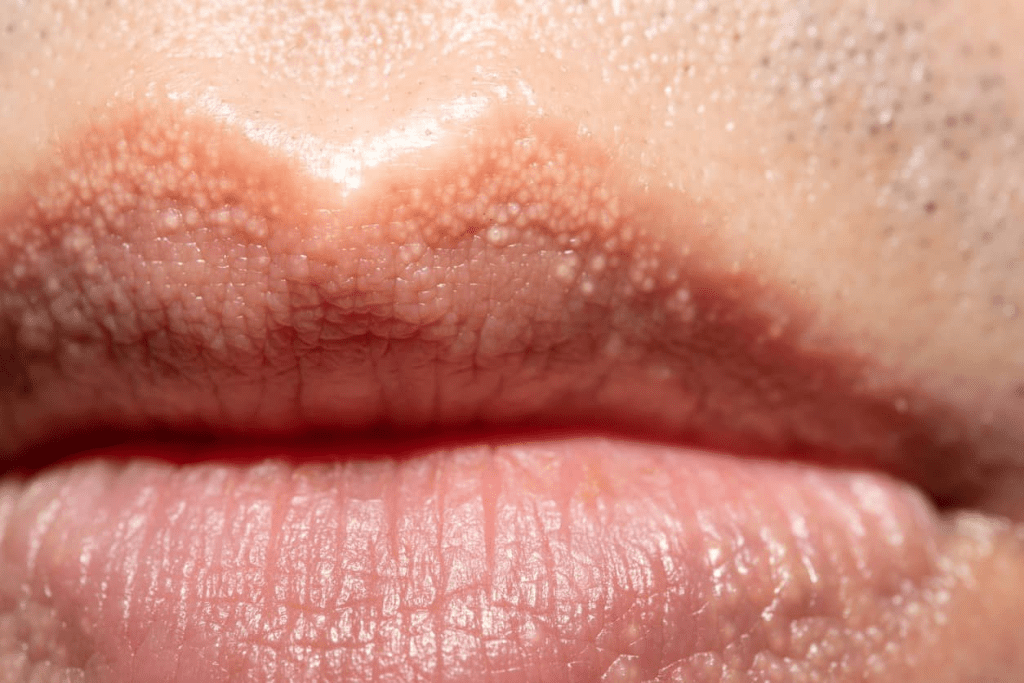Have you ever noticed small, white or yellowish bumps on your skin and wondered what they are? Especially if they appear in sensitive areas, such as your lips or genitals, it can be easy to worry that they might be a sign of something serious. However, there’s no need to panic—these bumps are most likely Fordyce spots, a completely normal and harmless condition. In this article, we’ll explain what Fordyce spots are, what causes them, and why they don’t require treatment.
What Are Fordyce Spots?

Fordyce spots are visible sebaceous glands, or oil glands, that are present on your skin. Typically, these glands are hidden beneath hair follicles, but in areas where hair isn’t present, they become more visible. These small, pale bumps usually appear on the lips, inside the cheeks, and the genital area, but they can show up in other places, too.
What Makes Fordyce Spots Different from Other Skin Conditions?
It’s important to understand that Fordyce spots are not warts, pimples, or blocked pores. Unlike other skin conditions, these spots are not caused by infection, poor hygiene, or sexually transmitted diseases (STDs). They are completely harmless and don’t spread. Most of the time, people only notice them when looking closely, as they don’t cause discomfort, pain, or itching.
Why Do Fordyce Spots Appear?
Fordyce spots are a natural part of many people’s skin. They’re not something you “get” or “catch” from someone else. Rather, they’re a genetic trait that most people are born with. Here’s why they might become more visible:
- Hormonal Changes: During puberty or pregnancy, hormonal shifts can cause an increase in oil production, making these spots more noticeable.
- Sebaceous Gland Development: These glands become more visible as they grow and push closer to the skin’s surface. This can happen naturally as the body matures.
- Genetics: If your parents had Fordyce spots, it’s highly likely you’ll have them too.
Video : FORDYCE Spots (pronounced Faw-Dise Spots)
Are Fordyce Spots Harmful?
No, Fordyce spots are not harmful to your health. They don’t cause pain, and they don’t signify any underlying medical issue. According to the American Osteopathic College of Dermatology, Fordyce spots are considered a normal anatomical variant, meaning they are just a natural part of some people’s skin. The good news is that they don’t require treatment unless they become a cosmetic concern.
What Fordyce Spots Are Not
Let’s clear up some misconceptions. Fordyce spots are not:
- Warts: Warts are caused by a virus, whereas Fordyce spots are just visible oil glands.
- Herpes: Fordyce spots do not indicate an outbreak of herpes, which causes painful blisters.
- Pimples or Acne: Pimples are blocked pores filled with oil and bacteria, whereas Fordyce spots are oil glands that are simply visible on the skin’s surface.
Should You Be Concerned About Fordyce Spots on Your Private Parts?
It’s understandable to feel a little concerned when you spot these bumps in private areas like your genitals. However, Fordyce spots in these regions are perfectly normal and nothing to worry about. They are not a sign of an STD or poor hygiene. They simply appear as small, pale bumps that look a lot like pimples but are completely benign.
What to Do If You Spot Fordyce Spots
If you’ve noticed Fordyce spots on your genitals, the first step is to stay calm. These spots aren’t harmful, and you don’t need to take any special measures to treat them. It’s crucial not to pick or squeeze them, as doing so can irritate the skin and possibly cause scarring.
Do Fordyce Spots Go Away?
Typically, Fordyce spots don’t completely disappear, but they may become less noticeable over time. As you age, your skin type and hormones may change, which can affect how visible these spots are. For some people, they become less noticeable, while for others, they may appear more pronounced during times of hormonal shifts, such as puberty or pregnancy.

When Should You See a Doctor About Fordyce Spots?
In most cases, Fordyce spots don’t require medical treatment. However, if the bumps change in appearance, size, or texture—such as becoming painful, inflamed, or infected—it’s a good idea to consult a doctor. Additionally, if you’re ever unsure about whether you’re dealing with Fordyce spots or something else, a dermatologist can help clarify the issue.
Treatment Options for Fordyce Spots
Since Fordyce spots are harmless, many doctors will advise leaving them alone. However, if their appearance bothers you, treatment options are available, including:
- Laser therapy: Some people opt for laser treatments that can reduce the visibility of the spots.
- Micro-punch surgery: This is a technique used to remove the bumps, but it’s generally not necessary unless the spots are causing significant emotional distress.
- Topical treatments: Certain creams may help reduce the appearance of Fordyce spots, but they aren’t always effective and can cause side effects like skin irritation.
Before considering any treatments, it’s important to consult with a dermatologist who can explain the risks and benefits specific to your skin.
Video : How to treat FORDYCE SPOTS – Doctor O’Donovan explains…
Living with Fordyce Spots
The key to dealing with Fordyce spots is understanding that they are entirely natural. They are not a flaw or a medical issue, and there’s nothing wrong with having them. If you’re feeling self-conscious about them, remember that these spots are common, and many people have them.
How to Manage Fordyce Spots
If you want to minimize the appearance of Fordyce spots, focus on maintaining good skin care practices, such as:
- Keeping the area clean and moisturized.
- Avoiding harsh skincare products or picking at the spots.
- Staying hydrated and following a healthy diet to support overall skin health.
Conclusion: Understanding Fordyce Spots
Fordyce spots are a normal, harmless condition that affects many people. These tiny white or yellowish bumps are simply visible sebaceous glands that appear on areas of the skin without hair, like your lips and genitals. Though they may look unusual, they are not a cause for concern, nor do they indicate any health problems. In most cases, they don’t require treatment, and they rarely cause discomfort. Understanding what they are can help reduce anxiety and foster a more positive relationship with your skin. So, if you notice Fordyce spots, don’t panic—they’re just another natural feature of your body!


